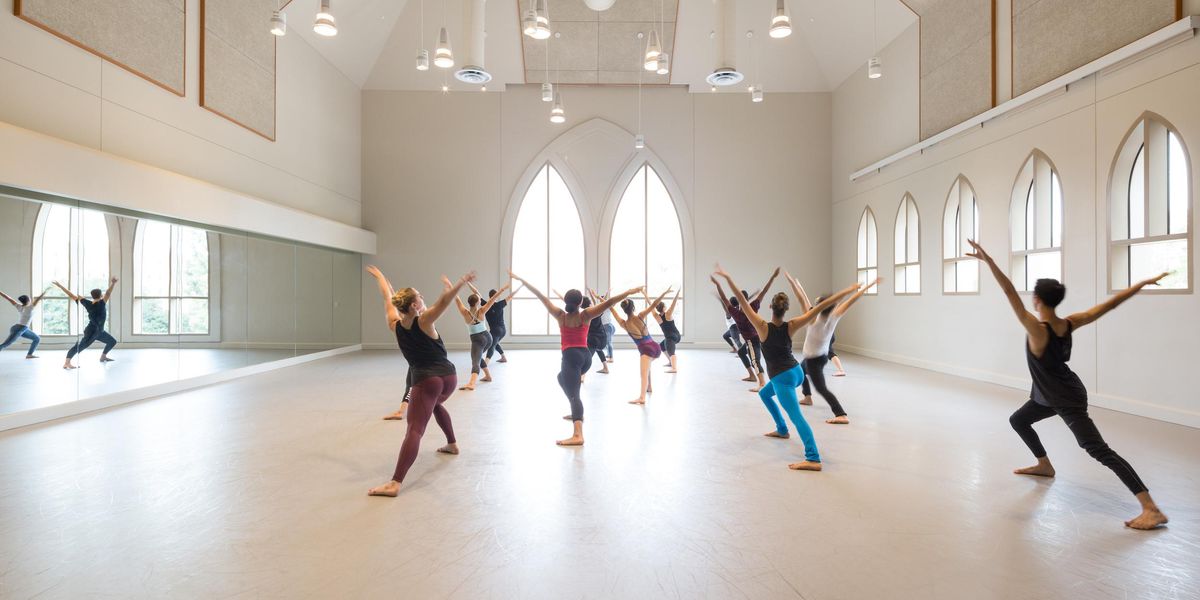Transitions
Marriages
Lauren Fadeley
, Pennsylvania Ballet soloist, and Francis Veyette, PAB principal, were married in October in Florida. The couple first met at a photo shoot for The Rock School in 1997; Fadeley was just 12 and Veyette (the brother of New York City Ballet’s Andrew Veyette) was 17. They were paired together in a rehearsal 10 years later, when Fadeley joined PAB—and she remembered him from that long-ago photo shoot. Celebrating that moment, they used the shoot as inspiration for their engagement photos.
Lauren Fadeley and Francis Veyette. Photo by Candice DeTore, Courtesy PAB.
Polina Semionova
, principal dancer with Staatsballett Berlin and guest artist at American Ballet Theatre, tied the knot with Staatsballett corps dancer Mehmet Yümak in September in Germany.
In Memoriam
Alexander Grant (1925–2011)
Alexander Grant joked that if he’d not made it as a dancer, he’d have become a sailor. He adored the sea, went on frequent cruises in his senior years, and the last time he traveled to New York in 2008, arrived from Britain on the Cunard liner Queen Mary 2.
But his first visit was almost 60 years earlier as a leading member of the Sadler’s Wells Ballet on what is now The Royal Ballet’s legendary 1949 debut North American tour. By then, at 24, Grant had more than made it as a dancer. He was a rising star whose seemingly instinctive artistry buoyed him through a long, distinguished, and dazzling career.
Grant, who remained with The Royal Ballet for 30 years, is often hailed as the greatest character dancer of his era, an accomplished classical dancer whose accompanying dramatic gifts made him a natural for character roles—and what roles! Early on, Grant became RB founding choreographer Frederick Ashton’s male muse. The number of roles he created for Ashton rivaled Margot Fonteyn’s total. And those roles, like the Jester in Cinderella (1948), Alain in La Fille Mal Gardée (1960), and Bottom in The Dream (1964), fully employed Grant’s virtuoso technique and indeed enlarged the whole concept of character dance in ballet.
Grant loved North America, forging many friendships, notably with Robert Joffrey, in whose 1987 version of The Nutcracker Grant was the first Drosselmeyer. Before that, from 1976 to 1983, Grant served as artistic director of the National Ballet of Canada, where he introduced works by Ashton, Robbins, Tetley, and MacMillan. He commissioned North America’s first full staging of Bournonville’s three-act Napoli as well as many new works by Canadian choreographers, notably James Kudelka.
After Canada, Grant remained active as a London-based coach and occasional performer, mostly with English National Ballet, and traveled the world staging Ashton’s Fille, most recently in Budapest in November 2010. He died in September after fighting infections that followed a hip replacement. —Michael Crabb
Grant takes a bow as Alain in
Fille in 1976. Photo by Beverly Gallegos, DM Archives.
Ruth Currier (1926–2011)
Impassioned performer, accomplished choreographer, and dedicated teacher, Ruth Currier contributed to American dance in many ways. She joined the José Limón Dance Company in 1949 and remained there as a principal dancer until 1963, creating roles in some of Limón and Doris Humphrey’s greatest works, including Limón’s Missa Brevis and There Is a Time and Humphrey’s Night Spell and Ruins and Visions. She also served as the company’s artistic director from 1973 to 1978.
From the mid-1950s forward, Currier presented her own choreography. In the Dance Observer, Louis Horst called her Antagonists “surely one of the finest works in the entire modern dance repertory.”
Because of Doris Humphrey’s disability (crippling arthritis), Currier served as her creative assistant for years. She became the physical translator for Humphrey’s choreographic visions. At Humphrey’s request, she completed a last work, Brandenburg Concerto No. 4, in her place.
As a teacher, Currier brought unusual clarity, humor, and great expectations to her classes. She often used examples from literature and music to make assignments clearer. Even her beloved cats, Belle and Gypsy, sometimes served as models—on one occasion, “successional symmetry,” as they sat spiraled around each other in identical shapes.
Currier’s teaching took her to many parts of the world, to universities and colleges, including Ohio State University, where she was an artist in residence for five years, Bennington College in Vermont, the Limón Institute, and her own studio in NYC.
Ruth Currier died at her home in Brooklyn in October. —Martha Wittman
Currier with José Limón in Humphrey’s
Night Spell, ca. 1956. Photo from DM Archives.
Nina Sorokina (1942–2011)
Nina Sorokina was one of those ballerinas who set the stage ablaze with her dancing. She demonstrated the exuberance, vitality, and risk-taking of the Soviet style, yet showed elegance, serenity, and grace—all tied up neatly in excellent technique—in her Russian classical roles. As Giselle, she displayed the lightest of footwork, buoyant with joy and love, while her Kitri was all passion, reckless and full of fun.
Born just outside Moscow, Sorokina attended the Moscow Choreographic School, where she was taught by Sofia Golovkina. Upon graduating, she joined the Bolshoi Ballet as a soloist. She won the gold medal at the International Ballet Competition in Varna in 1966, snapping up another gold at the Moscow competition in 1969, as did Mikhail Baryshnikov.
She was often partnered by her husband Yuri Vladimirov, and the duo delighted audiences with their speed and daredevilry. They created roles in Vladimir Vasiliev’s The Geologists and Icarus and were especially noted for their bravura performances in The Flames of Paris and Spartacus.
Sorokina left the stage in 1980. She taught at the Bolshoi School and at GITIS (Russian Academy of Theatre Arts) for many years, passing on her knowledge and technical fire to her students.
Her death in October, within four years of two other great Bolshoi ballerinas—Natalia Bessmertnova and Ekaterina Maximova—closes an illustrious chapter of women stars in the Bolshoi’s history. —Margaret Willis
Sorokina with Yuri Vladimirov in
Diana and Acteon. Photo by Judy Cameron, DM Archives.




